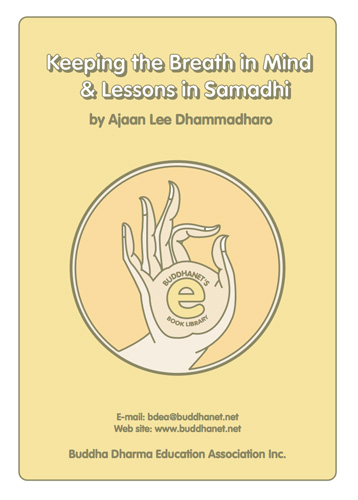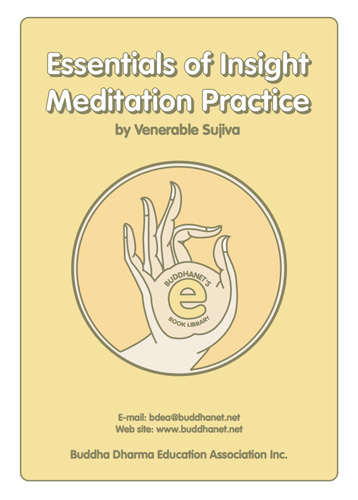 Most viewed Most viewed |

breathmind.pdfKeeping the Breath in Mind & Lessons in Samadhi7413 viewsThis is a 'how to' book. It teaches the liberation of the mind, not as a mind-boggling theory, but as a very basic skill that starts with keeping the breath in mind. The teachings here are drawn from the works of Ajaan Lee Dhammadharo (1906-61), one of Thailand's most renowned teachers of Buddhist meditation practices. Ajaan Lee was a forest monk - one who prefers to live in the seclusion of the forest and makes his meditation the central theme of his practice - so his teachings grow out of personal, practical experience, although he also makes a point of relating them to standard Buddhist doctrine.
|
|

ThePurposeofLife.pdfThe Purpose of Life and Other Teachings7280 viewsThis book gives very clear, practical and direct advice to those who seek to achieve an understanding of their life on earth, and how to lead a noble and peaceful life amidst the confusion, murkiness, materialism and strong craving that this age heralds. Ven. Dhammananda shows us the real nature of worldly life, giving us a correct understanding of life as it is and puts worldly pleasures into its right perspective.
|
|

Aggregates.pdfA Burden Off the Mind: A Study Guide on the Five Aggregates7260 viewsOne of the new concepts most central to the Buddha's teaching was that of the khandhas, usually translated into English as “aggregates.†Prior to the Buddha, the Pali word khandha had very ordinary meanings: A khandha could be a pile, a bundle, a heap, a mass. It could also be the trunk of a tree. In his first sermon, though, the Buddha gave it a new, psychological meaning, introducing the term “clinging-khandhas†to summarize his analysis of the truth of stress and suffering. Throughout the remainder of his teaching career, he referred to these psychological khandhas time and again. Their importance in his teachings has thus been obvious to every generation of Buddhists ever since.
|
|

essentials.pdfEssentials of Insight Meditation Practice7062 viewsThe ultimate aim of insight meditation is to free one from the unsatisfactoriness of cyclic existence. Readers may also find numerous quotations of the Buddha's teaching on mindfulness, detachment and liberation throughout the entire book. Those verses act as a source of inspiration and purpose to put vipassana into practice - a practice that brings about insight into the three universal characteristics of unsatisfactoriness, impermanence and non-self which leads one into detachment and ultimate liberation.
|
|

01_Introduction.mp3(1) Introduction7035 viewsThis series of audio files are from Ven. Pannyavaro's book: "The Vipassana Retreat". Pannyavaro is the resident monk and teacher at the Bodhi Tree Forest Monastery,Tullera, NSW Australia. This is the introduction to the Vipassana Retreat, which describes the supportive conditions of a retreat centre, etc.
|
|

z-stupa01.jpgTibetan Symbol6994 viewsTibetan Buddhist Art Work: Tibetan Symbol
|
|

1lotus03.jpgSacred Lotus 036985 viewsTibetan Buddhist Art Work: Sacred Lotus 03
|
|

8_symbols.jpgThe Eight Auspicious Symbols6918 viewsThe Eight Auspicious Symbols
|
|

4snowlion.jpgDragon036906 viewsTibetan Buddhist Art Work: Dragon03
|
|

whatbelieve.pdfWhat Buddhists Believe6890 viewsThis expanded 4th edition of What Buddhists Believe answers many questions which are asked about Buddhism by Buddhists and non-Buddhists alike. There are so many misconceptions regarding superstitions and misinterpretations which are associated with this noble religion that it has become imperative to explain the Teachings in a manner which has contemporary relevance.
|
|
| 1212 files on 122 page(s) |
 |
 |
 |
5 |  |
 |
 |
|
